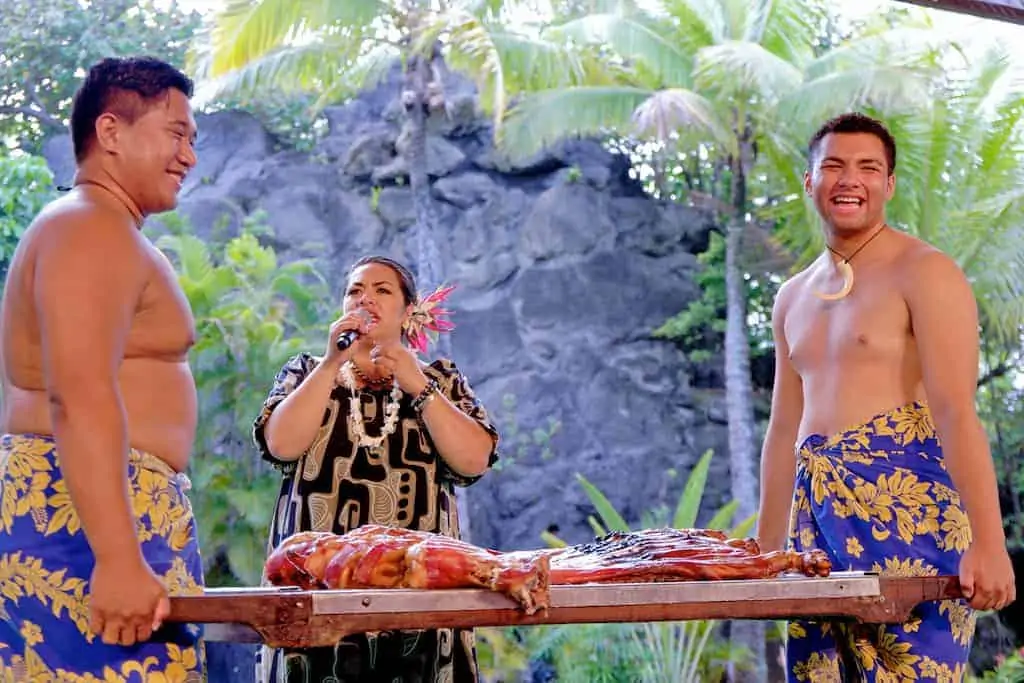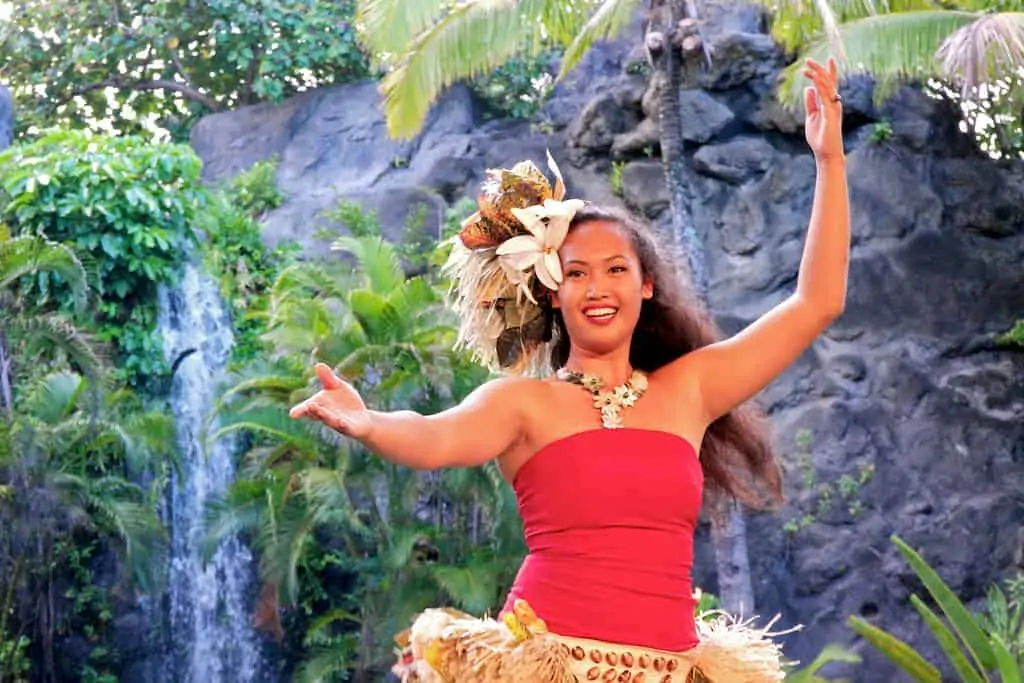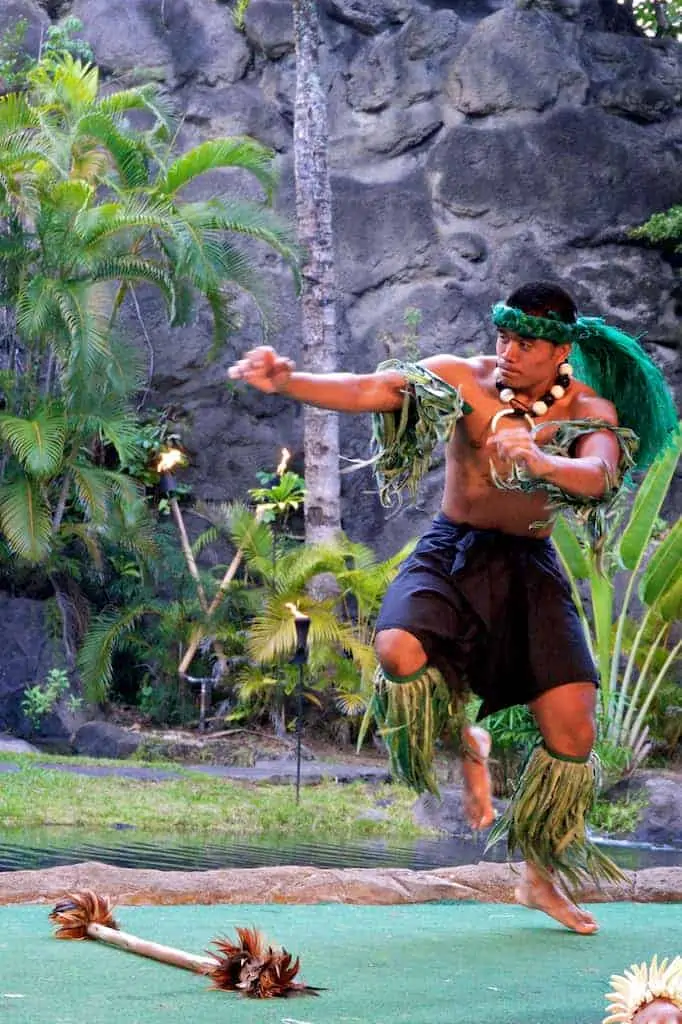The Polynesian culture is defined by a oneness with nature, and it has played a large role in the evolution of religion and related practices within the culture. These traditions honored the milestones of life while incorporating the organic elements that make up the world and provide for the community.
Natural forces and the many gods and deities are an important part of rituals and the celebration of life. Before it was known as a luau, this coming together of people was known as ‘aha‘aina, meaning gathering meal.

Surrounded by friends and families, this event showcased achievements and encouraged bonding among the members of the community. When major milestones were reached like weddings and births or accomplishments made such as victory in war, an ‘aha’aina’ was thrown in celebration.
It was filled with delicious foods each symbolizing a characteristic of the human spirit such as strength or virtue. Vegetables, meats, fruits, and poi provided the sustenance for this important event. The pig for the feast was cooked in the traditional underground oven called an imu.

A pit was dug and a fire would be started with wood from the island. As the wood burned, rocks would be piled on top of the flames to be heated and eventually the pig would be laid a top the rocks.
Dressed in salts and a variety of wet leaves, it would be sealed in the pit with volcanic sand or a heavy cloth taking almost an entire day to cook. The carefully prepared food was eaten by hand on plates made of leaves.
Poi was a staple of the Polynesian diet, and it is a gray almost purple colored food with the consistency of cake batter (depending on how it is made). It is made from the stem of the taro plant and used to cleanse the pallet between dishes.
During the consumption of this delicious feast, the men and women did not dine together nor were women or commoners allowed to eat certain foods. These were strict rules, punishable by death.

In addition to the foods, people would also enjoy the hula and chants together signifying their joy and unity as a community. It was a way to pass on the legends of their people and gods.
The moments surrounding the preparation and participation of the ‘aha‘aina were considered sacred and many of the gods were called upon in order to give their blessings before the gathering could proceed.
It was a deep and meaningful celebration that was meant to connect the members of the community and symbolize the joy of life.

Over time, the tradition of the ‘aha‘aina began to evolve and King Kamehameha II started significant social change within the culture and banished the strict rules thought to be handed down by the gods.
He allowed all men, women and commoners to dine together which started a radical progression to a new kind of ‘aha‘aina and a destruction of the code of conduct known as kapu.
During the first meal combining the genders, the King served his step-mother luau which is made from young taro leaves cooked in coconut milk. It was forbidden to women and commoners, and the King’s gesture broke the lineage of ancient traditions and rules.
Luau became a symbol of the new gathering and eventually the term was used to refer to the celebration. The ‘aha‘aina morphed into the modern day luau.
The traditions of the luau have continued to evolve with time. There were beautiful decorations made from native flowers from local flowering trees arranged and carefully placed around the feast as well as lauhala mats which were woven from the leaves of the hala trees.
Hula dancing continued as a tradition and paved the wave for the entertaining fire dancing. It was the beginning of what we recognize as modern day Hawaii, and the celebration known as luau.

Today, the major events that call for a luau are most often a child’s first birthday, graduation from high school or a wedding. The modern day luau still features many of the same traditions from the first luau, but it has grown to become an invitation to experience Polynesian culture.
While those participating may not share ancestry, the luau has become a way for others to temporarily be a part of an amazing and historic civilization. It embodies the passion and survival of their ancestors and traditions.
In a world where our history is often forgotten and our cultures blended, the luau remains a reminder of the ancient Polynesian culture and the way they honored life.
Thank you to the Polynesian Cultural Center and Turtle Bay Resort for hosting my visit to Oahu. See, hear, smell and taste a Hawaiian Luau for yourself at the Polynesian Cultural Center for an experience you and your family won’t soon forget!
I love reading about the history of cultural traditions. I love luaus and how much rich history is involved